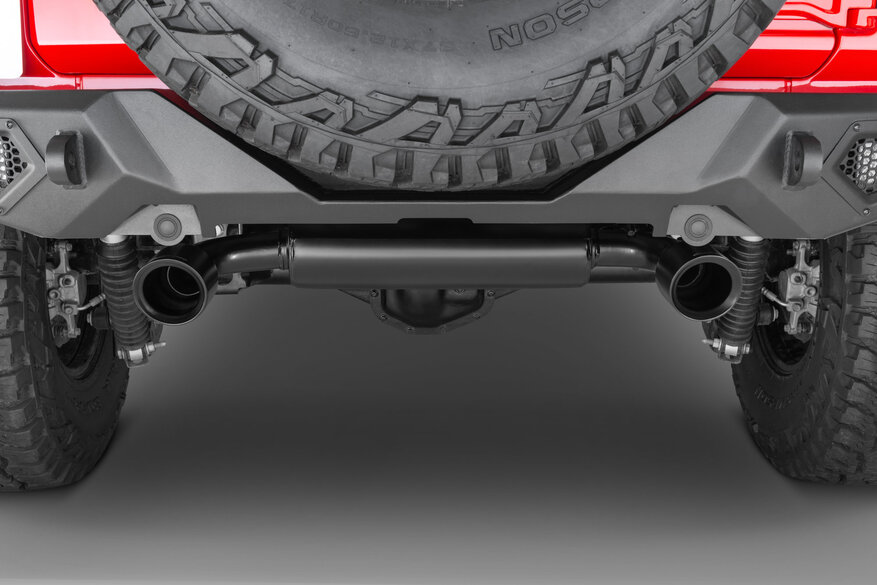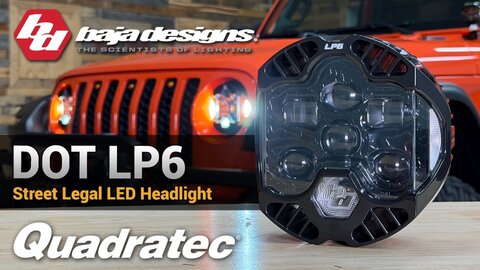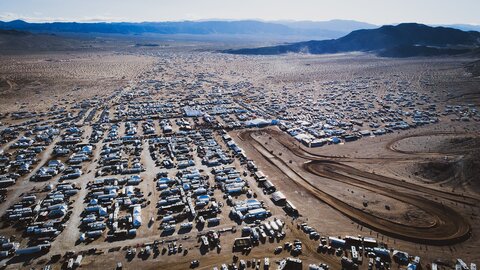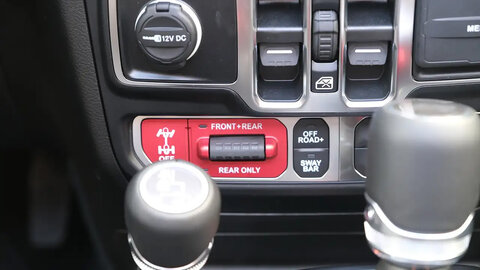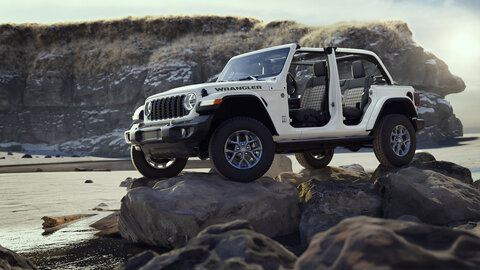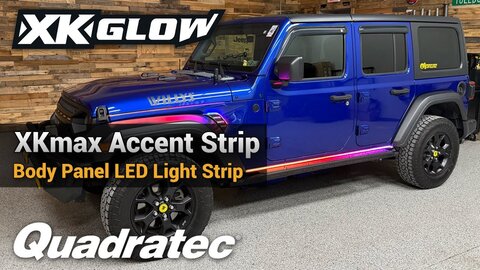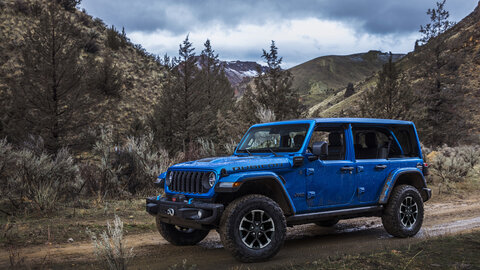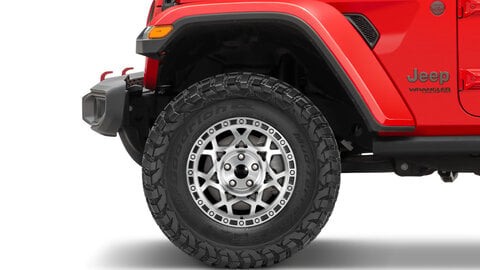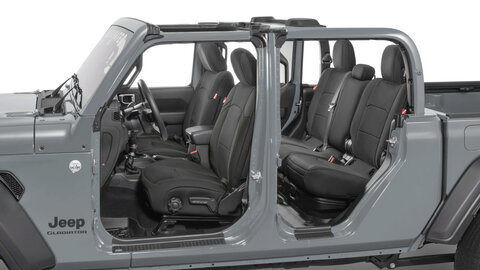by Matt Konkle
Managing Editor
It sits there mostly unseen under your Jeep. Extending out from the engine in a series of pipes, some bent, some straight, until it hits the muffler. And then, with a short metal tailpipe, it ends.
Your Jeep’s factory exhaust system.
And it’s probably something you’ve never really given a second thought about since you’ve been driving the vehicle. After all, the stock kit seems to work, right? You turn the key, the engine roars to life, and all that exhaust gas flows through the system before exiting out the back. In fact, you may not even pay attention to the thing until it goes bad.
So when, though, should you pay attention and upgrade that stock kit? And what can you gain from an aftermarket upgrade?
Well, considering that factory exhaust kits are constructed from less expensive mild steel components, chances are your current kit may be showing some serious wear and tear and is due for a replacement. If that is the case, then yes, now would be a good time for an upgrade.
But even if the stock system is still in decent condition, you should really think about upgrading to an aftermarket exhaust replacement for your next Jeep modification.
That’s because aftermarket exhaust upgrades help increase the lifespan of your engine, as well as providing a bit more horsepower, torque, fuel economy, off-road performance, durability and sound quality.
See, performance aftermarket kits are all about the flow. That is, helping increase exhaust flow over what the restrictive stock exhaust offers. And they do this with larger diameter piping that helps eliminate some exhaust back pressure—allowing the Jeep’s engine to breathe easier. By breathing easier, your engine will also have less strain over time and last longer.
Conversely, factory kits employ smaller piping, along with crush bends that pinch the steel and further restrict exhaust flow. This is done to keep manufacturing costs down, as well as to quiet exhaust noise. Some factory kits also include a resonator to help provide that quiet. While restrictive, the factory system can still get the job done, but it certainly doesn’t offer anything in the way of longevity or performance gains.
In addition to larger diameter exhaust pipes, aftermarket performance kits generally have a layout that is straighter than factory, employ lighter and less restrictive mufflers, and also use mandrel bends instead of crush bends. This method inserts a series of balls inside a section of pipe before bending is performed. Once bent, the diameter of the pipe remains even around curves instead of pinched, helping to ensure less restrictive exhaust flow.
The point of all this free-flowing exhaust, besides engine longevity, is performance. When an engine breathes out easier, it also breathes in easier which helps produce a small amount of horsepower, torque and fuel efficiency at cruising speeds. It won’t turn your Jeep into a quarter-mile burner, but every performance gain is certainly helpful.
Aftermarket kits are also about sound quality. Sure, all that improved exhaust flow and performance may be nice, but you might be someone who really wants a different exhaust tone. Something deeper, or more aggressive than the stock system. Something more you. Well, a free-flow aftermarket exhaust kit hits that mark perfectly.
By opening up the exhaust piping and allowing the engine to breathe easier, as well as using a less restrictive muffler, aftermarket kits have become known for that desirable throaty sound often associated with high-end performance cars.
Next, aftermarket exhaust kits are all about durability. While most factory exhaust systems are made from mild steel that can quickly deteriorate over time, aftermarket versions generally utilize aluminized steel or stainless steel. Aluminized steel offers a stronger step up from stock systems, while stainless steel kits are often the most preferred and designed to last much longer — usually for the life of the Jeep.
Finally, for those into the off-road scene, you already know that aftermarket exhaust kits help entice your Jeep's engine to toss out a bit more low-end torque than stock versions, which is certainly helpful in many trail situations like slowly powering through mud, climbing hills or playing with sand.
However, we all know rock crawling (or more aggressive trail riding) can often lead to vehicle damage. And the lower-hanging components of the Jeep's exhaust (factory or performance) are right in that danger zone.
So that's why some aftermarket exhaust systems are offered in high-clearance versions—meaning the exhaust tips are tucked up higher than traditional exits, and the muffler is often relocated closer to the front of the kit. Additionally, these performance mufflers can be smaller in order to prevent damage should the vehicle high-center.
High clearance kits still offer the same performance, sound and durability benefits of aftermarket exhaust kits, but they also seriously lessen the chance you may damage the kit if your departure angle isn’t textbook on a certain trail, or if you choose the wrong line and slide backwards off a rock.













